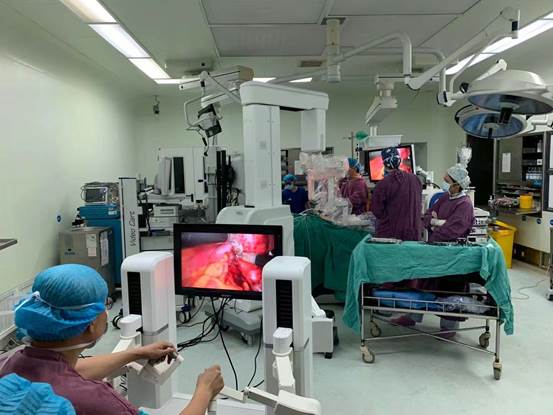On November 26th, the domestically designed and produced surgical robot called MicroHand S was officially put into clinical testing, as announced in the kick-off meeting held at Central South University, China. This marks a new phase for China’s independently developed surgical robots which are now one step away from being industrialized and put on market.
The MicroHand S was jointly developed by Tianjin University, Central South University and the WEGO Company that provides surgical devices and pharmaceutical services. The Third Xiangya Hospital of Central South University in Hunan Province is supervising the clinical testing.
Surgical robots are high-end medical equipment that enable doctors to perform operations with control levers on a console instead of the traditional way of operating directly on patients’ bodies using surgical instruments. Surgeons’ movements are transmitted through remote control to the robotic arm which then accurately simulate the movements and complete the surgery on the patient’s body since it can rotate and swing freely in 360 degrees, execute complicated suturing and knotting, and avoid any risk of hand trembling or shaking prone to happen in manual operations. The surgical robot also boasts a probing camera that provides magnified, clearer stereoscopic images than the human eye can perceive. What’s more, doctors are able to carry out operations while sitting, making it easier to perform complicated and time-consuming surgeries.
Prof. Wang Shuxin in charge of Tianjin University’s research team for MicroHand S robot development said that surgical robots are being developed not to replace doctors but to enhance their abilities to conduct surgeries. As the first research team in China to study about minimally invasive surgical robots starting in 2000, Prof. Wang’s team succeeded in developing the nation’s first minimally invasive surgical robot MicroHand A in 2010 and has been incessantly improving it since then.
“The MicroHand S robot we put into clinical tests, thanks to the collaborative work carried out by Prof. Zhu Shaihong’s team from Central South University, aims to industrialize the domestically produced surgical robots, if they are able to obtain the first medical device registration license issued to surgical robots.” Prof. Wang said.
It is reported that in developed countries, surgical robots have been widely applied to general surgery, urology, gynecology, cardiothoracic surgery and other fields while China is still working on its own independently developed surgical robots, which mainly depend on imports at present. The MicroHand S robot is said to have more than met the technical demands set at the international level in aspects like the operation mode, flexibility of auxiliary operation, working space, operation force, positioning accuracy, etc.

By Eva Yin
Edited by Doris Harrington






